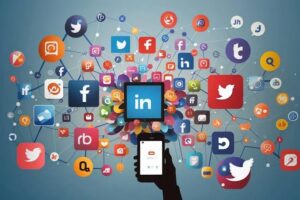The Autoplay – Subscriptions!
There’s a quiet shift happening around us. You don’t really own much anymore, you rent. Imagine you’ve got a tiny task ahead of you. All you want to do is digitally sign a PDF document. Or you just want to crop out that one stranger photogramming your vacation picture. Or maybe you’re halfway through reading this one article, the headline hooked you, but now it says, sign up for full access.

So you sign up for the 7-day free trial. It’s just an email, a few card details, and a tiny checkbox you didn’t read properly. No monetary transactions yet. You can cancel anytime. Except, you forget. A week goes by, and ta-da, your money is gone. A small lapse for you, a little profit for them.
Avoid, you check the list of all your subscriptions, and that’s when it hits you. This isn’t just one forgotten app. Everywhere you look, you’re paying a little, a little, and a little more. Netflix, Prime Deliveries, Spotify, YouTube Premium, iCloud Storage, Photoshop, House Rent, Car EMI, Phone EMI, OTT Bundles, Food Delivery Memberships. We have subscribed to everything. And many times, this isn’t a clear choice you make over and over. You’re forced into paying these recurring costs or dependencies without even realizing it. It’s a system often built by design. It’s not just a financial model.
It’s a mindset, a life on lease that benefits the corporations, but not necessarily you. The pressing question here, how did we get here? And is this passive payment model really better for us? Or are we being sold an illusion of convenience while our pockets get drained one monthly payment at a time?
You know, when I was growing up, I had this shelf full of my favorite bands, albums, games, movies, and a lot of books. I would always save money, fight with my parents, and waited for months just to buy these things. But as I started growing older and found this new place called the internet, this shelf became empty, but the phone in my pocket?
That was heavy with memories and possibilities of getting anything I wanted, anytime. I’m sure this is something you all must have experienced. As the internet and the storage capacity of our phones expanded, the amount of physical stuff we owned began to decrease. You know, this change occurred imperceptibly because of deliberate effort by a few companies in Silicon Valley that aimed to change the world.
So you see, in the early days of the internet, if you wanted to upgrade your computer’s software, you had to first buy a physical CD of the software, install it in your PC, and then wait for a few hours. Obviously, it was time-consuming and expensive, both for you as a consumer and the companies. So to change this, one company came up with a solution. Instead of selling software as a product, they will sell it as a service. You will pay them a small monthly fee, and the software will directly reach you.
 All you need to have is a computer and an internet connection. This idea, which pioneered the software-as-a-service industry, or SaaS, as it’s called today, is often attributed to Salesforce. It not only increased accessibility for consumers, but also showed how companies can create a predictable revenue stream for their products and services.
All you need to have is a computer and an internet connection. This idea, which pioneered the software-as-a-service industry, or SaaS, as it’s called today, is often attributed to Salesforce. It not only increased accessibility for consumers, but also showed how companies can create a predictable revenue stream for their products and services.
And after Salesforce, companies like Netflix, Amazon with their Prime membership, and Spotify came with subscriptions as a core part of their business model and completely changed the way we used to get things. Movies, music, and the overall experience of buying the things became more about having access over ownership. Now, think about this shift in terms of your own mental balance sheet. From the past, buying something often felt like adding an asset. You owned it, it was yours. Signing up for endless subscriptions can feel slightly different, almost like you’re taking on liabilities, and at any cost, you’re obligated to pay not for ownership, but just for continued access.
Twenty-five years ago, economist Jeremy Rifkin had thought…Who wonders about this in his book, The Age of Access? Here, we are entering an era where hyper-capitalism is replacing industrial production. And people are not just buying goods and services, but they are buying access to experiences. Now if you think about this, what he said has actually come true today. Companies like Amazon, Apple, and Disney are not just selling us a product, but an experience. And because we have become wired to create these experiences, several once considered important to own have also changed. Let me give you an example, okay?
Back when we were growing up, our parents always used to prioritize buying a home, even if it meant giving up a huge portion of their savings. But if you look at a lot of the younger generations today, especially in tier 1 cities, even if they can afford a house, they prefer to rent or buy one.Before the house, they pay for your rent by buying one.
Let’s do a quick subscription headcount of your average Monday, okay?
You wake up on a bed that you’ve rented. While getting dressed, you open Spotify to listen to your favorite song. Then, you commute to work on a scooter you’ve leased. At work, you use Google Workspace and Adobe Suite. Company pays, but it’s still in lease. Lunch, you’ve got your Swiggy 1 Pass for quick delivery. Then, probably go work out at a gym. Again, something you pay a monthly fee for. Then head back home, wind down to Netflix.
Yet another subscription. Fireworks fixed for a moment. Zero permanent assets. You don’t own the bed, the songs, the scooter, the car, the software, or the TV you’re watching on Netflix on. It’s a payment, and every single comfort evaporates. Now, it’s all very convenient. I am not denying that.

But as Rift Game nailed it, we have traded possessions for commissions, and the meter never stops ticking. But in the name of access and selling experiences, some companies today are tricking us and keeping us in the mood of never-ending subscriptions. I mean, have you ever tried to cancel a subscription service?
While we were researching for this video, we found this interesting research paper about how Amazon tracks Prime users and makes it extremely tough for them to cancel their subscription. According to this paper, Amazon uses something known as ELR Throat to stop people from ending their Prime membership. Now, how this works is, when you try to quit your Prime membership, they either remind you of the perks that you will miss and guilt-trip you into not quitting, which is a tactic known as confirmed shaming. Or they will admit failure, or just simply, deliberately place multiple pages before you can finally cancel the membership.
This is an example of what is known as dark patterns, which are basically the secret tactics that multiple companies use to design their websites in order to exploit you. In fact, according to research by the Advertising Standards Council of India last year, the maximum number of deceptive patterns in apps were found at the time of subscribing.
A very famous incident related to this took place in America and Canada with people who owned an HP printer. So in this case, what happened was that HP promised to send ink at people’s homes even before their ink ran out for a monthly subscription plan. But what happened was that a lot of the people started complaining that HP did not deliver the ink even after they paid the monthly fee. Some claimed that they were charged more and their cartridges stopped working after they had cancelled the subscription, essentially breaking their printers unless they paid HP.
The printer stopped. While it’s encouraging to see examples like Native directly tackling exploitative models for physical products, the fight against being chabbed in unwanted subscriptions is far from over, especially in the digital realm. There are many, many companies that have become masterful at leveraging our own psychology against us. They exploit behavioral biases inherent in us. If you go to subscribe on any platform on an AI tool today, they will offer you three or four different plans.
It’s either a monthly, quarterly, annually, or a group plan. This pricing strategy is called tiering, and it’s used to give flexibility to the users. The majority of us always choose a monthly plan because it’s the least expensive. But the real reason is that even if the total amount we spend on a subscription is the same, whether we choose monthly or yearly payment, our brains are wired to process the monthly payments as more manageable and affordable.
